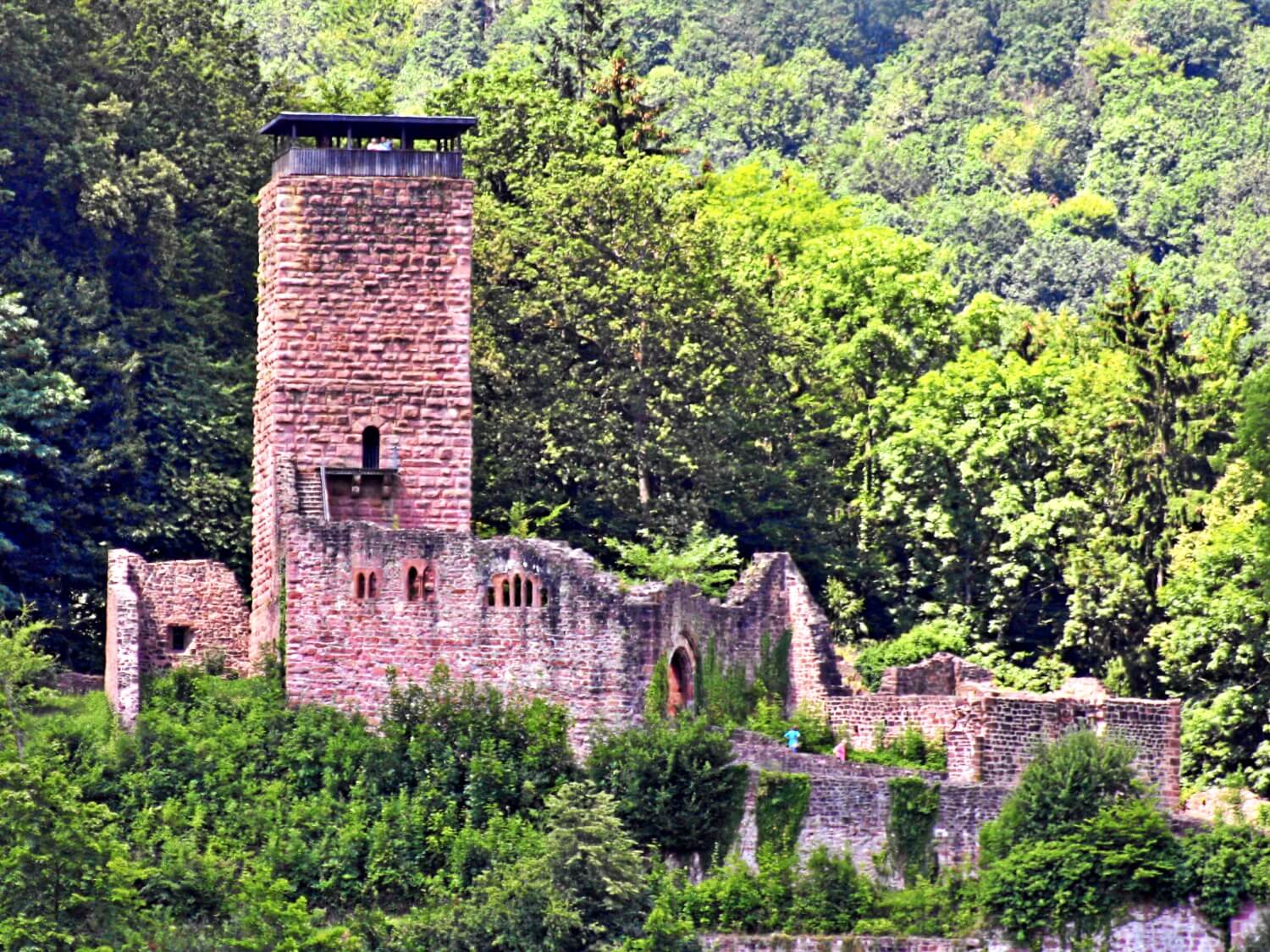Hinterburg
(Alt-Schadeck)
Darmstadt Hessen Germany
castle, chateau
Hinterburg
(Alt-Schadeck)
Darmstadt Hessen Germany
castle, chateau
The Hinterburg is part of a series of four castles in a string along the Neckar River, just to the east of Heidelberg and near the village of Neckarsteinach
Die Hinterburg, auch Alt-Schadeck genannt, ist die Ruine einer Spornburg auf 165 m ü
Previous names
Hinterburg(Alt-Schadeck), Hinterburg(Alt-Schadeck)
Description
The Hinterburg is part of a series of four castles in a string along the Neckar River, just to the east of Heidelberg and near the village of Neckarsteinach. These also include the Vorderburg ("Forward Castle"), Schadeck, also called the "Schwalbennest," or Swallows Nest, and the Mittelburg. Hinterburg literally means "Behind Castle," but is more aptly translated as the "Concealed Castle." It is indicative of its location and purpose, being essentially an advanced fortification to protect Neckarsteinach from the west and not readily visible from a distance.
The castle was started in the 1100s by the von Steinach family, and was the oldest of the four, serving a strategic purpose in allowing the lords to observe the Neckar and Steinachtal. One of the earliest records mentions Bligger von Steinach, c 1160. His son, Bligger II, who was also a famous minstrel of the time, added much of the outer wall that helped drastically improve the castle's defensive posture. At one time it also had a dry moat with a drawbridge. The castle continued to be used up until the 1600s, largely in the service of the Elector Palatine. Afterwards it began to decay from neglect as it lost its importance in the era of cannon. There is no indication that it was ever seriously besieged.
To the right, two views of the castle from below, showing the defensive posture. Placing the castle on a hill naturally made an assault difficult, but the Hinterburg was vulnerable from behind.
Below, a view of the main entrance to the castle, with the tower beyond. This entrance takes you into the outer ward, where there is another gate before you can enter the inner ward.
Below, left, the entrance to the inner ward. The walls here are not too thick and are not designed to withstand bombardment. However, they could deter a basic attack by brigands or an angry mob.
Below, the same entrance but seen from above, at the walkway entrance to the tower. An examination of the wall at the right indicates there was at least one additional story here, with the Gothic windows providing natural light for the lower story. The lower wall facing the river was also thicker than that facing the outer ward (on the left). The wall for the upper story is clearly quite thin, being only about a foot thick.
The castle has some interesting semi-underground passages that lead to various defensive battlements. These provide an interesting glimpse into life in a medieval castle (dark and damp!) and how they were defended. In this case, the loophole below is small and narrow, and does not provide much windage for the use of a crossbow or arblast. Therefore, it was probably designed more for observation than as a fighting position.
http://castlesingermany1.homestead.com/
Die Hinterburg, auch Alt-Schadeck genannt, ist die Ruine einer Spornburg auf 165 m ü. NN bei Neckarsteinach im Landkreis Bergstraße in Hessen. Sie ist die älteste der vier Burgen Vorderburg, Mittelburg, Hinterburg und Schwalbennest und die Stammburg der Edelfreien von Steinach.
Geschichte
Um 1100 wurde mit dem Bau der Burg begonnen, wahrscheinlich im Lehen des Bistums Worms oder des Bistums Speyer. 1142–1165 wird Bligger von Steinach als Burgherr urkundlich erwähnt. Sein Sohn, der Minnesänger Bligger II. von Steinach baute sie zu einer umfangreichen Stauferanlage aus. Nach dem Aussterben der älteren Linie von Steinach um 1270 wurde die Burg von Bischof Heinrich von Speyer 1272 an seine Gläubiger verpfändet. Bereits 1344 soll die Burg verlassen oder verfallen gewesen sein, da Bischof Gerhard von Speyer einen Vertrag mit dem Wimpfener Propst Peter von Mur über den Wiederaufbau der Burg schloss, der dafür jährlich 20 Pfund Heller und zwei Fuder Wein erhielt. 1366 bekräftigte Karl IV. gegenüber Bischof Lambert von Speyer das Eigentum an der Burg. 1375 erhielt Contz Münch von Rosenberg die Burg zu Lehen. 1418 überließ Bischof Raban von Speyer seinem Vetter Wilhelm von Helmstatt auf Lebenszeit die Burg und seinen Teil der Stadt, nach dessen Ableben 1426 auf dieselbe Weise seinem Neffen Weiprecht III. von Helmstatt, der die offenbar inzwischen wieder verfallene Burg auch zu renovieren hatte. 1427 wurde nach einer Auseinandersetzung zwischen den Helmstatt und den Landschad von Steinach ein gemeinsamer Burgfrieden für Burg und Stadt Steinach ausgehandelt. Auf Weiprecht von Helmstatt gehen größere Umbauten in der Burg zurück. Nach seinem Tod 1490 ging das Lehen auf seinen Neffen Martin von Helmstatt († 1490) über und von diesem auf dessen Töchter Mia, die mit dem auf der Vorderburg ansässigen Blicker XIV. Landschad von Steinach verheiratet war, und Gertrud, die mit Heinrich VI. von Handschuhsheim verheiratet war, womit die Burg in zwei Besitzhälften geteilt war. Bereits 1497 erwarb Heinrich VII. von Handschuhsheim die Hälfte der Landschad mit einem Viertel der Stadt Steinach und dem halben Dorf Epfenbach. Heinrichs ältester Sohn Philipp führte 1529 abermals Bauarbeiten an der Burg durch und verstarb im selben Jahr. Bei der Abwicklung seines Nachlasses kam es zu Streitereien und einem Prozess vor dem Pfälzer Hofgericht, das entschied, dass die Burg Eigentum des Speyrer Domstifts sei. 1541 wurden die Brüder Hans, Hans Pleikard und Christof Landschad von Steinach durch Bischof Philipp von Speyer mit der Burg belehnt. 1545 forderte ein Urteil die von Handschuhsheim auf, die Burg zu räumen, was nach einer Bestätigung des Urteils 1549 geschah. Die Burg blieb bis zum Aussterben der Landschad von Steinach 1635 in deren Besitz.
Die Burg wurde im Dreißigjährigen Krieg (um 1630) zerstört.
Nach dem Aussterben der Landschad zogen die Stifte Worms und Speyer den früheren Lehensbesitz (Hinterburg, Vorderburg und halbe Mittelburg) wieder ein, unterstellten ihn kurz der Selbstverwaltung und übertrugen ihn 1657 Wolf-Heinrich von Metternich zu Burscheid als Lehen. Dieser erwarb im selben Jahr von Dieter VIII. Landschads Tochter Eva Elisabeth auch den früheren Landschad-Allodialbesitz und ebenso die restliche Hälfte der Mittelburg von den Freiherren von Venningen, so dass ab der späten Mitte des 17. Jahrhunderts der Besitz der vier Burgen wieder in einer Hand vereinigt war. Nach dem Aussterben der Metternich-Linie 1753 wurden die früheren Lehen und sogar der früheren Allodialbesitz von den Stiften Speyer und Worms eingezogen. 1803 kam der gesamte Besitz im Rahmen der Mediatisierung an das Land Hessen, das mit dem Erben des Allodialbesitzes, Freiherr von Dorth, einen Vergleich schloss, und diesem neben der als Amtssitz benutzten Mittelburg auch die Ruine der Hinterburg abtrat. 1910 verzichteten die Herren von Dorth auf die Ruine der Hinterburg, deren Unterhalt zu kostspielig war und die darauf wieder an den hessischen Staat fiel.
Useful information
Gratis
Gratis
- Wunderschöner Ausblick
- Burgturm
Ruinen der Burg
-
Nearby castles
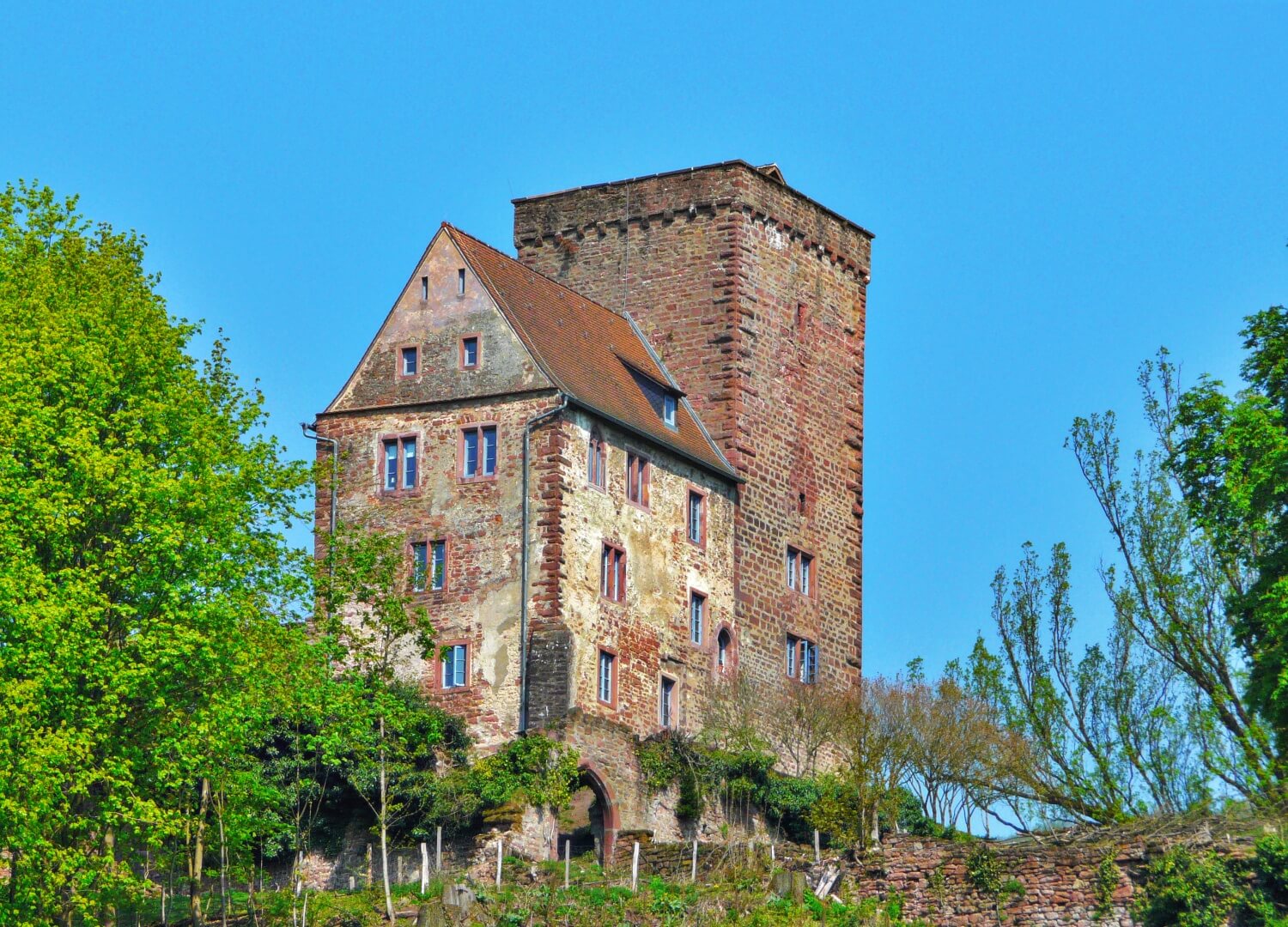
Vorderburg (Neckarsteinach)
Darmstadt
0.6km
castle, chateau
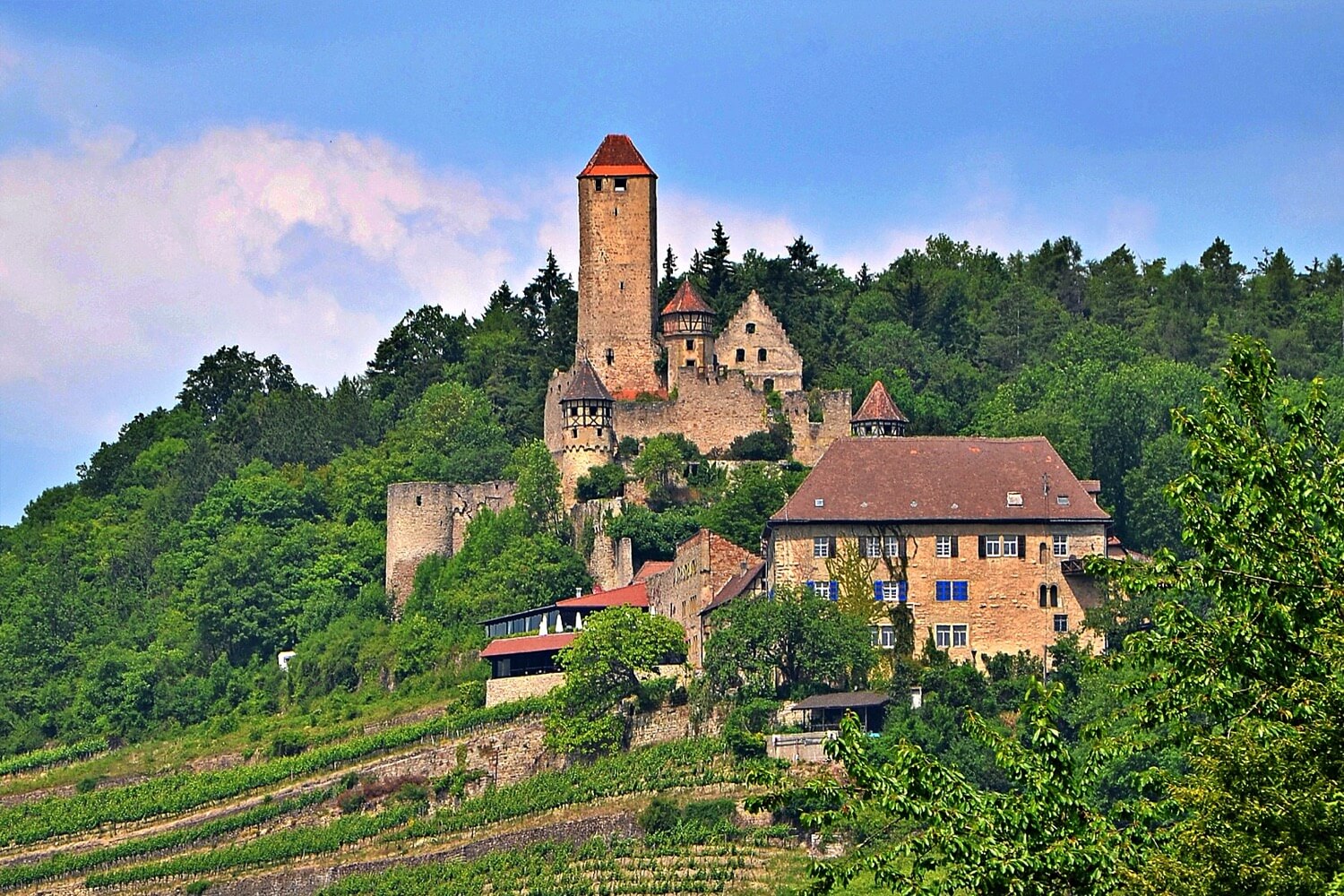
Dilsberg Castle
Karlsruhe
1.4km
castle, chateau
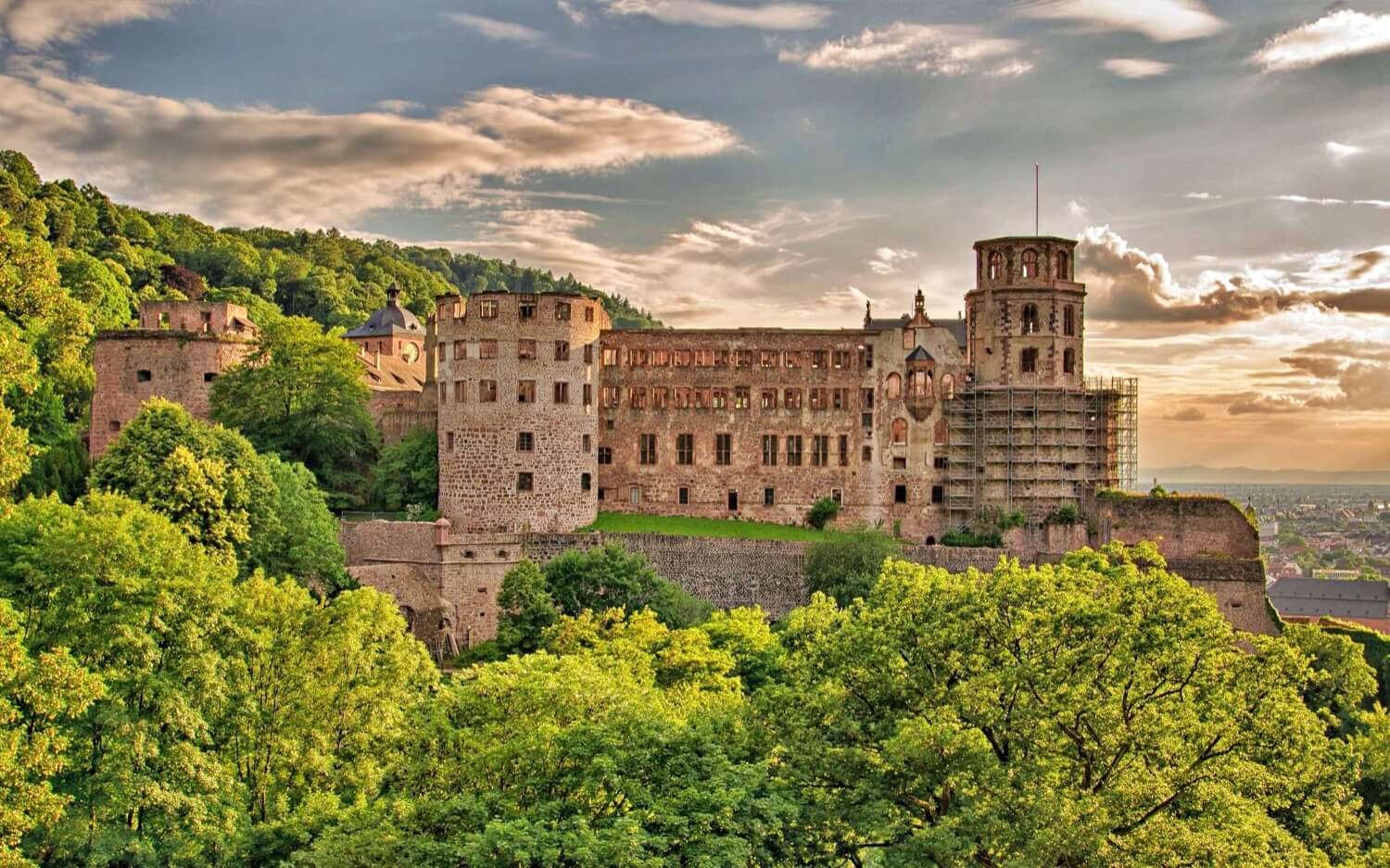
Heidelberg Castle
Karlsruhe
8.1km
castle, chateau
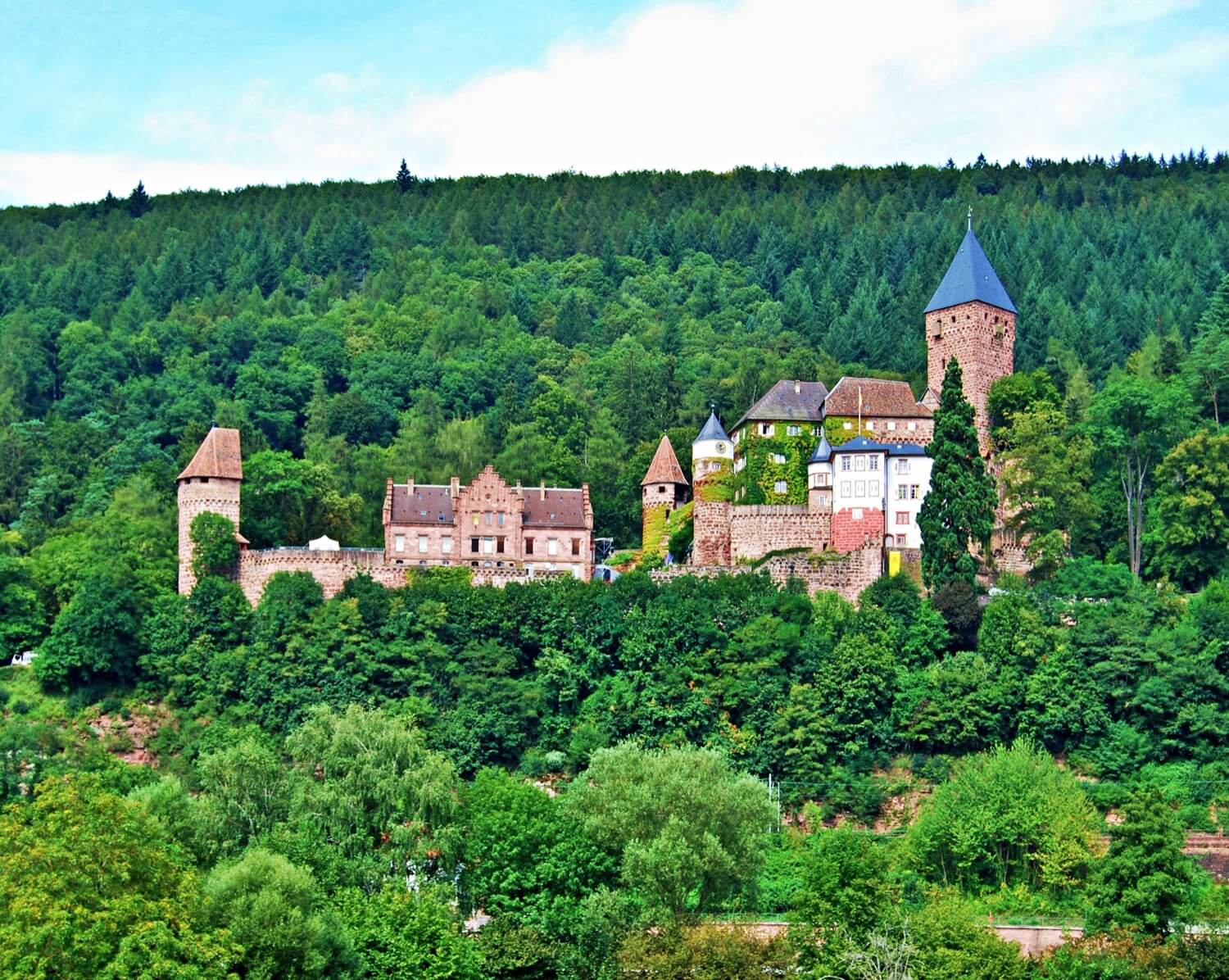
Zwingenberg Castle
Karlsruhe
15.0km
castle, chateau

Schloss Rauenberg
Karlsruhe
18.2km
castle, chateau
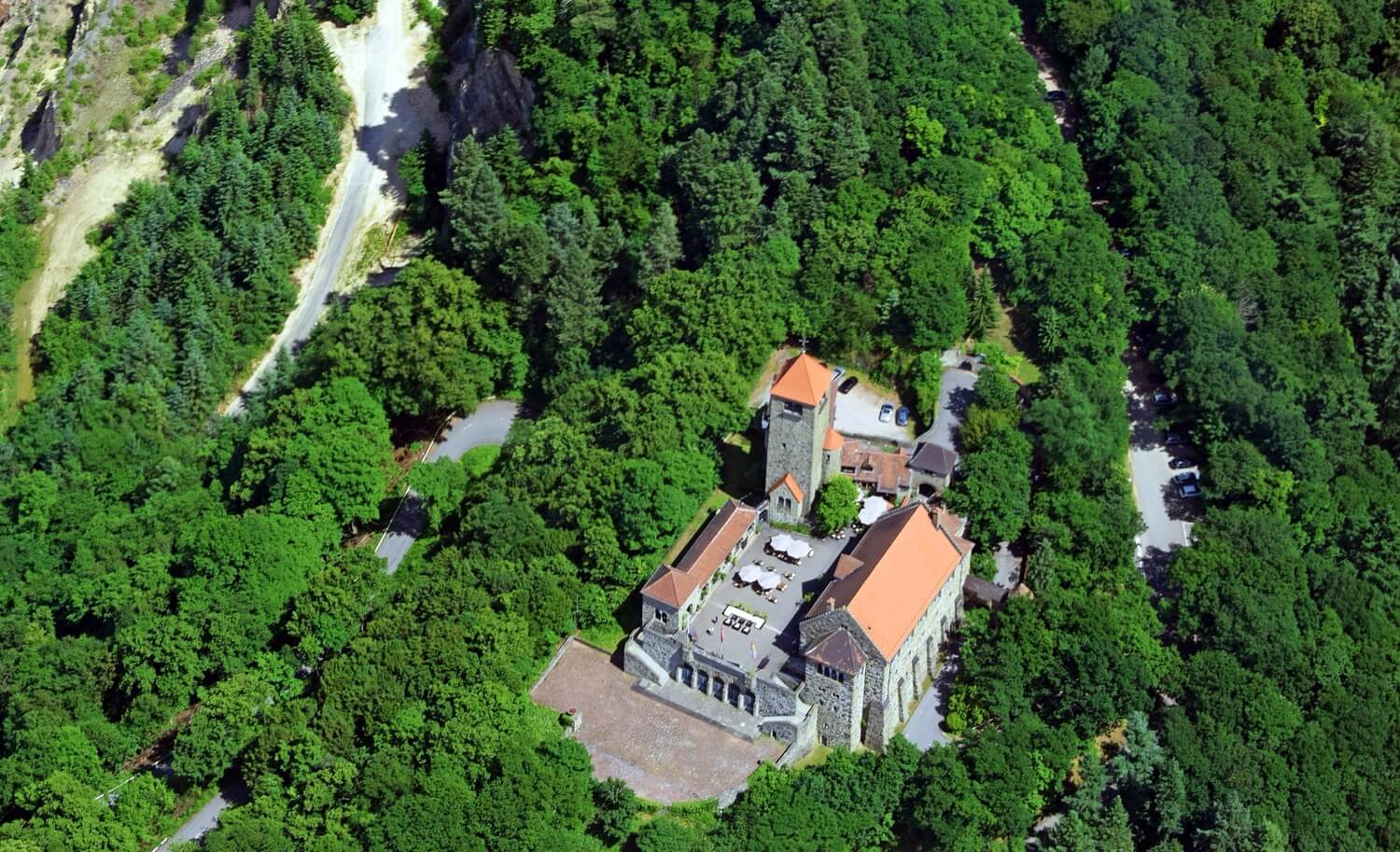
Wachenburg
Karlsruhe
18.6km
castle, chateau
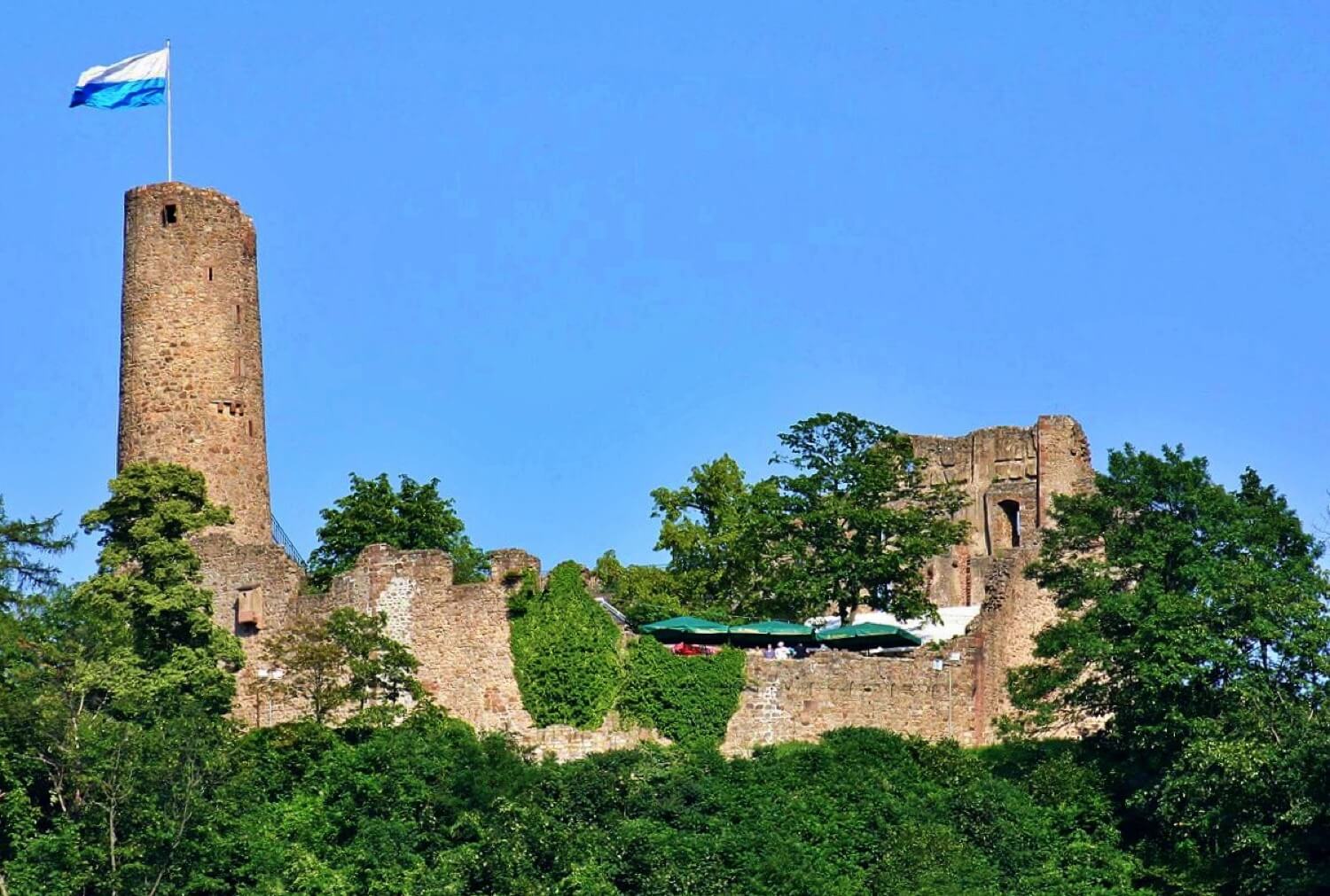
Windeck Castle (Weinheim)
Karlsruhe
18.7km
castle, chateau
